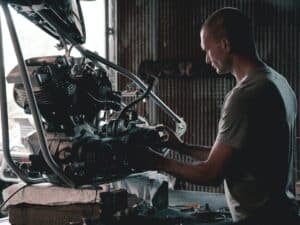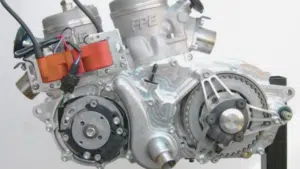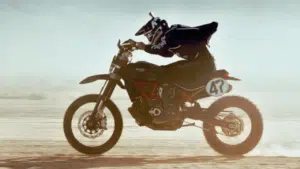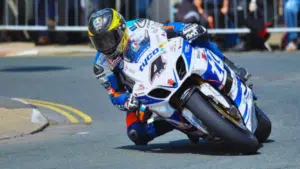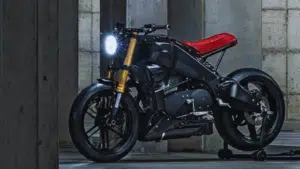Motorcycle riding is an exhilarating experience, but it comes with its share of risks. Ensuring your safety on the road is paramount, and one crucial step in this regard is a thorough pre-ride motorcycle inspection. Just like a pilot checks their aircraft before takeoff, or a chef prepares ingredients before cooking, a motorcyclist should perform a systematic check of their bike before hitting the road. In this guide, we’ll walk you through a comprehensive pre-ride motorcycle inspection checklist to help keep you safe on your two-wheeled adventures. We’ll also discuss the essential tools and gear you need to carry out these checks effectively.
Essential Motorcycle Inspection Tools and Kits
Before diving into the inspection checklist itself, let’s equip ourselves with the right tools and kits. Having the appropriate gear can make the inspection process smoother and more accurate. Here are some must-have items:
- Tire Pressure Gauge: Maintaining proper tire pressure is crucial for stability and handling. A reliable tire pressure gauge will help you check and adjust the air pressure in your motorcycle’s tires.
- Tool Kit: Carry a basic tool kit with essential items like wrenches, pliers, screwdrivers, and a set of Allen keys. These tools will come in handy for minor adjustments and fixes on the go.
- Flashlight: Inspecting certain areas of your bike may require extra illumination, especially if you’re doing it in low-light conditions. A compact, powerful flashlight can be a lifesaver.
- Chain Maintenance Kit: If your motorcycle has a chain drive, a chain maintenance kit with lubricant and cleaning tools is essential for keeping the chain in optimal condition.
- First-Aid Kit: Safety should always be a priority. A compact first-aid kit can be a lifesaver in case of minor injuries or emergencies on the road.
Having these tools and kits readily available will ensure you’re prepared for any situation during your pre-ride inspection.
Motorcycle Maintenance Manuals and Guides
To conduct a thorough inspection, it’s essential to have access to your motorcycle’s maintenance manuals and guides. These documents provide valuable insights into the manufacturer’s recommendations for pre-ride motorcycle Inspection checklist, and maintenance, including inspection points, service intervals, and specific procedures.
- Owner’s Manual: Your motorcycle’s owner’s manual is a goldmine of information. It contains detailed maintenance schedules and step-by-step instructions for various tasks, including inspections. Always keep it accessible.
- Service Manual: If you’re comfortable performing more complex maintenance tasks, a service manual provides in-depth technical information, including torque specifications and advanced repair procedures. It’s a valuable resource for DIY enthusiasts.
- Online Resources: In the digital age, many manufacturers offer online resources, including videos and forums, where you can find additional tips and guidance from experienced riders and mechanics.
By referring to these manuals and guides, you can ensure that your pre-ride inspection is in line with the manufacturer’s recommendations, promoting both safety and the longevity of your motorcycle.
Safety Gear (Helmets, Gloves, Riding Jackets)
While inspecting your motorcycle is crucial, it’s equally important to inspect your safety gear. Your personal protective equipment can make all the difference in case of an accident or unexpected road conditions. Here’s what you should check:
- Helmets: Inspect your helmet for any visible damage, such as cracks or dents. Check the straps and fasteners for signs of wear and ensure they are securely fastened. Replace your helmet if it’s been involved in a crash or is past its expiration date.
- Gloves: Examine your riding gloves for wear and tear, especially in high-stress areas like the palms and fingertips. Make sure they fit snugly and provide a good grip.
- Riding Jackets: Check your riding jacket for any tears or abrasions. Ensure that all zippers, snaps, and Velcro fasteners are in good working order. A well-fitted and properly maintained jacket can provide essential protection in case of a fall.
Your safety gear is your last line of defense, so investing time in inspecting and maintaining it is a small price to pay for your well-being on the road.
Pre-Ride Motorcycle Inspection Checklist
Now that you’re equipped with the right tools, have access to your motorcycle’s manuals, and have ensured your safety gear is in top condition, let’s dive into the pre-ride inspection checklist. This checklist covers critical areas of your motorcycle that should be inspected before each ride:
- Tires: Check tire pressure and tread depth. Look for any visible damage or foreign objects lodged in the tires.
- Brakes: Test both the front and rear brakes to ensure they are responsive and not spongy. Check brake fluid levels.
- Lights and Signals: Test headlights, taillights, turn signals, and brake lights to ensure they are functioning correctly.
- Controls: Check the clutch and throttle for smooth operation. Ensure that handlebars and levers are secure.
- Fluids: Inspect oil and coolant levels. Look for any signs of leakage under the motorcycle.
- Chain (if applicable): Lubricate and adjust the chain tension as per the manufacturer’s recommendations.
- Suspension: Check for leaks or damage in the front forks and rear suspension.
- Electrical: Ensure all electrical connections are secure, and the battery is properly charged.
By following this checklist diligently, you can significantly reduce the risk of mechanical failures while riding and enhance your overall safety on the road.
Conclusion
Prioritizing safety should be the foundation of every motorcycle ride. A pre-ride inspection is a simple yet effective way to ensure that your bike is in optimal condition, and that you are equipped with the right safety gear. By following the checklist we’ve provided and having the necessary tools, manuals, and gear, you can embark on your rides with confidence, knowing that you’ve done everything in your power to stay safe. Remember, safety first, and enjoy the open road responsibly.






